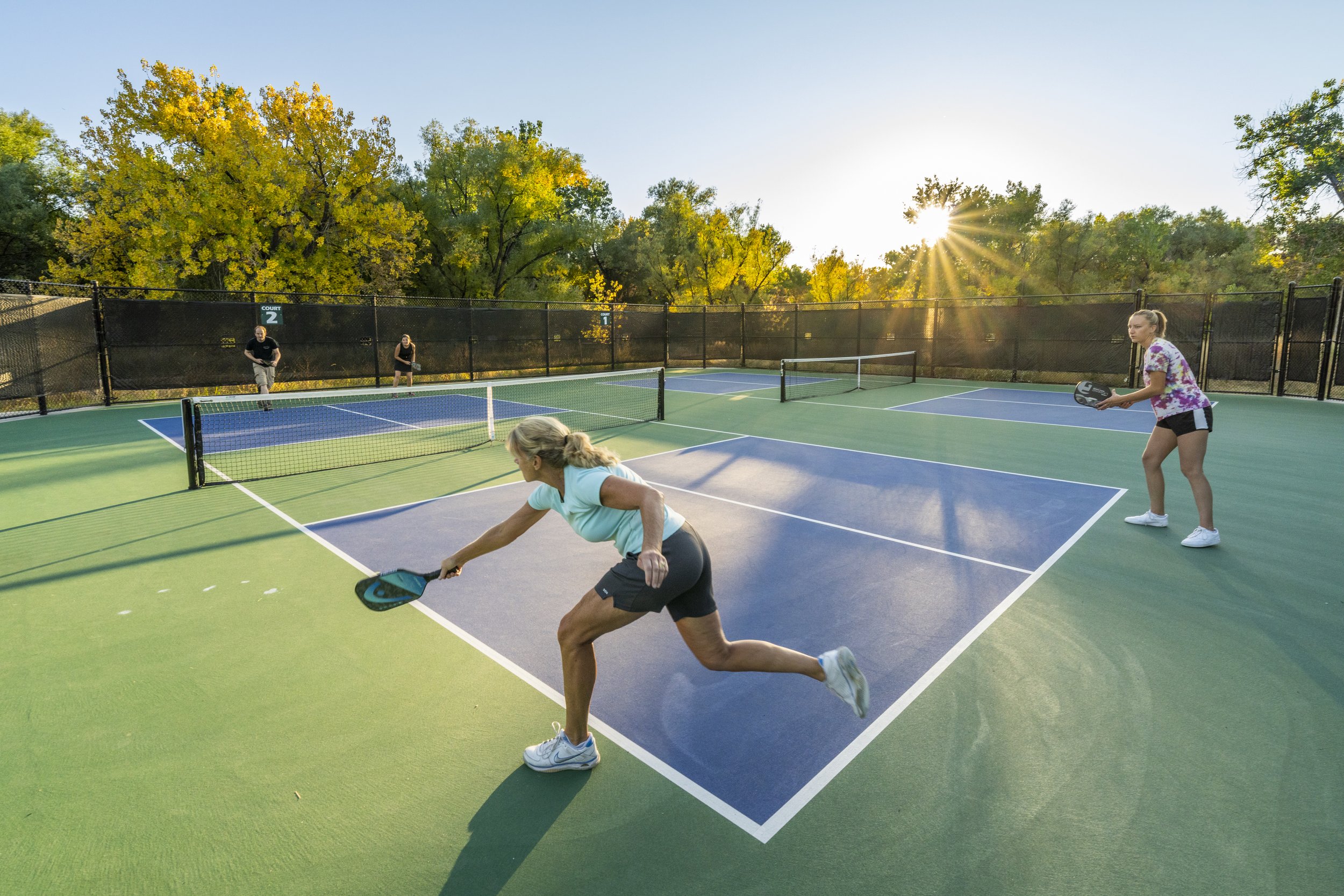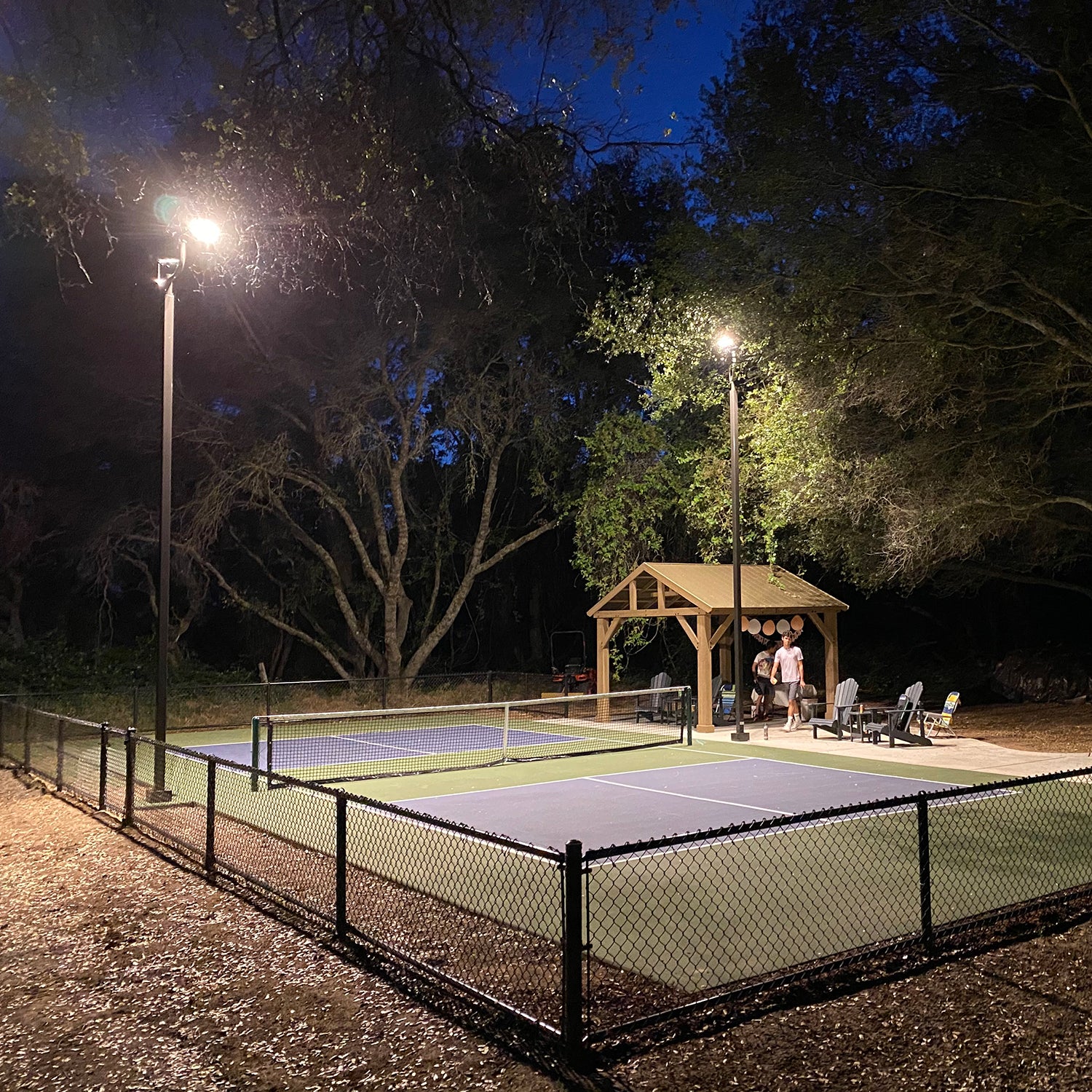Crucial Actions for Successful Pickleball Court Construction in Your Community
Crucial Actions for Successful Pickleball Court Construction in Your Community
Blog Article
Navigating Rules for Pickleball Court Building in Your Location
Constructing a pickleball court in your location calls for a nuanced understanding of numerous local laws, including zoning regulations, building licenses, and safety requirements. Each district imposes details guidelines that can considerably affect the expediency of your project. Engaging with neighborhood authorities and the community is important for guaranteeing conformity and cultivating assistance. Browsing this regulative landscape can be intricate and time-consuming. What are the crucial actions you should take into consideration to prevent prospective risks and guarantee a smooth building and construction process?
Comprehending Neighborhood Zoning Legislations
When thinking about the building and construction of a pickleball court, comprehending neighborhood zoning regulations is critical to guaranteeing conformity and avoiding potential legal problems. Zoning policies determine just how land can be used and commonly include specifications related to entertainment centers. These legislations can differ considerably by town, affecting variables such as court placement, dimension, illumination, and sound degrees.
Before starting building and construction, it is necessary to seek advice from the regional zoning board or planning division to ascertain the details policies that relate to your residential or commercial property. Certain areas may limit recreational activities, while others might call for certain permits or adherence to certain standards. It is likewise essential to think about obstacles, which establish exactly how much frameworks need to be from residential or commercial property lines or various other structures.
In addition, exclusive growths, such as property owner associations (HOAs), may impose their own guidelines relating to the building and construction and usage of pickleball courts. Understanding these policies can prevent pricey adjustments or litigation down the line. Involving with local stakeholders and community members can give important insights and foster assistance for your job, guaranteeing that it lines up with the community's expectations and needs.
Getting Necessary Building Permits
Just how does one navigate the intricacies of obtaining essential structure permits for a pickleball court? The process starts with recognizing neighborhood policies and requirements stated by community authorities. Typically, you will require to send an in-depth site plan that details the proposed court dimensions, products, and design. This plan should comply with zoning legislations and any type of specific regulations referring to recreational facilities.

As soon as licenses are acquired, it is crucial to adhere to any kind of assessment routines and demands throughout the building and construction phase. Keeping communication with regional authorities will certainly help with a smoother approval process and help avoid potential setbacks. By extensively preparing and understanding the allowing landscape, you can successfully navigate the complexities associated with constructing a pickleball court while remaining compliant with all local regulations.

Assessing Environmental Influence
When planning the building and construction of a pickleball court,A thorough assessment of environmental effect is essential (Pickleball court construction). This examination helps identify potential effects on neighborhood environments, water sources, and area appearances. Trick aspects to take into consideration include website option-- making sure that the court is not improved environmentally sensitive land, such as wetlands or environments for threatened varieties
Soil stability and drainage patterns must be assessed to prevent erosion and water pooling, which can adversely impact surrounding plants and wild animals. In addition, the choice of materials is essential; selecting sustainable and environment-friendly choices decreases ecological damage.
The application of effective stormwater monitoring methods is one more essential aspect, as it assists minimize overflow and sedimentation. Engaging with regional environmental agencies can provide beneficial insights right into laws and finest techniques certain to your location.
Last but not least, area input can be advantageous in comprehending any type of neighborhood environmental worries and promoting assistance for the job. By carrying out a thorough environmental effect assessment, stakeholders can ensure that why not try these out pickleball court construction lines up with lasting techniques and adds positively to the neighborhood's eco-friendly health and wellness.
Abiding With Safety Standards
Making certain conformity with security standards is essential for the effective building and construction and operation of a pickleball court. Abiding by established security regulations lessens the danger of injuries and mishaps, making sure a protected atmosphere for gamers.
Key security criteria include proper court measurements, surface materials, and illumination requirements. The court has to fulfill the official dimensions of 20 feet wide by 44 feet long for increases play, with appropriate barrier zones to protect against injuries from errant balls. Pickleball court construction. The surface should be constructed from non-slip materials to enhance traction and decrease the likelihood of drops
In addition, lighting must suffice for evening play, supplying consistent lighting to prevent shadows that can hinder presence. Neighborhood structure codes might additionally determine certain requirements for fencing and internet height to guarantee gamer safety and protect against unapproved access to the court area.
Regular examinations and upkeep are important to maintain these requirements gradually. By focusing on safety compliance, court proprietors not just safeguard gamers but also promote a positive reputation within the area. This dedication to safety can encourage greater involvement and satisfaction of the sport, inevitably adding to its development and sustainability.

Involving the Area in Planning
Community involvement in the preparation phases of pickleball court building and construction can considerably improve the project's total success. Engaging local residents and stakeholders promotes a feeling of ownership and urges joint decision-making, which can lead to wider support for the effort.
To successfully include the neighborhood, organizers should initiate public meetings or workshops, supplying a platform for residents to articulate their opinions and preferences pertaining to area, design, and services. Surveys and responses forms can likewise be utilized to collect understandings from a bigger audience, ensuring that diverse perspectives are thought about.
Furthermore, creating an area board of advisers can promote continuous conversations and address issues throughout the preparation procedure. This board can include agents from different demographics, such Source as local institutions, recreational organizations, and area associations, therefore intensifying community depiction.
Efficient communication is crucial; updates concerning the job should be regularly shared via newsletters, social networks, or local bulletins. By prioritizing neighborhood involvement, organizers can cultivate interest, mitigate potential resistance, and develop a pickleball facility that genuinely resonates with neighborhood worths and demands. This collaborative technique not only enhances the project but also reinforces community ties.
Verdict
Finally, browsing the intricacies of pickleball court construction demands a comprehensive understanding of neighborhood laws, including zoning legislations, structure permits, and check out here safety criteria. Carrying out ecological analyses is necessary to alleviate eco-friendly impact, while area involvement can boost support for such jobs. By sticking to these guidelines and fostering partnership, effective application of pickleball courts can be accomplished, advertising entertainment opportunities and community well-being. Proceeded persistance in these areas will certainly make certain compliant and sustainable growth.
Building a pickleball court in your location needs a nuanced understanding of different neighborhood policies, consisting of zoning regulations, structure authorizations, and security criteria.When considering the construction of a pickleball court, comprehending local zoning legislations is essential to making sure compliance and staying clear of possible legal concerns. By completely preparing and understanding the permitting landscape, you can efficiently navigate the intricacies included in creating a pickleball court while continuing to be certified with all local laws.
In conclusion, browsing the complexities of pickleball court building and construction necessitates a comprehensive understanding of regional policies, consisting of zoning legislations, structure authorizations, and safety standards. By adhering to these standards and fostering partnership, successful implementation of pickleball courts can be attained, advertising recreational possibilities and area health.
Report this page